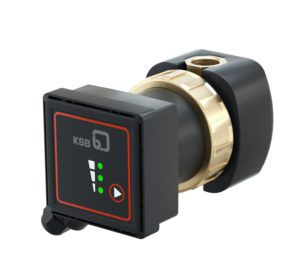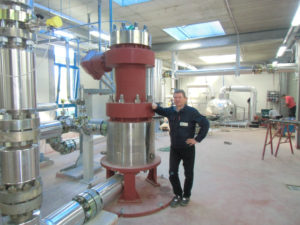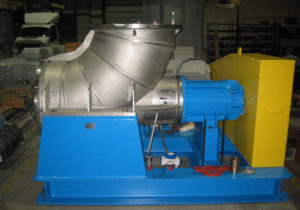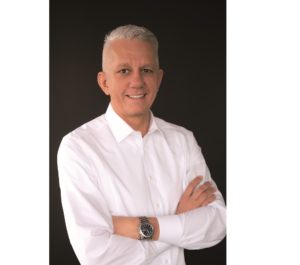Wilo: High-efficiency Pumps for Optimised Efficiency in Solar Thermal Applications
The energy balance of a solar thermal system includes the power consumption of the circulation pump in the collector circuit. Due to electrical drive power, a conventional pump can consume up to 15 percent primary energy (factor 3 for power conversion) in relation to the solar energy collected.
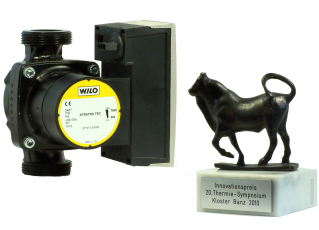
Wilo
Pumps adjusted in particular to the power requirements of solar systems can considerably reduce power consumption to approximately three to four percent - referring to the energy output - compared to conventional circulation pumps. Thus the system s total efficiency is considerably improved.
Against this background, the Dortmund pump expert WILO SE presents the state-of-the-art of solar thermal high-efficiency pumps at the Intersolar 2010 in Munich (9 to 11 June). The high-efficiency pump "Wilo-Stratos TEC ST" is in the centre of attention. It even won the innovation award “Innovationspreis 2010” which was awarded during the 20th “Symposium für Thermische Solarenergie” (symposium for thermal solar energy) in the Banz abbey in Bad Staffelstein. Every year the renowned prize is awarded for the most innovative developments in solar thermal technology.
"Wilo-Stratos TEC ST" saves energy by means of an improved maximum efficiency of up to 52 percent and an extended modulation area. This is how power consumption is reduced in the nominal point from 47 W to 25 W; and in the original minimum point (defined by the usual minimum modulation via phase fired controllers of approx. 30 %) from 24 W to initially 7 W. If the entire modulation area is utilised, power consumption is even reduced to just three Watt.
Wilo presents an entire pump range for various requirements of solar thermal applications including "Wilo-Stratos TEC ST" and further pump models at the Intersolar. The main focus is on high-efficiency pumps with EC motor technology which consume up to 80 percent less power than uncontrolled pumps. They have PWM or 0 - 10 V interfaces which enable the integration into the system control. To achieve an optimum solar gain, the pumps are controlled by the solar controller which detects the temperature difference between collector and storage unit. The output is exactly adapted to the current demand - thus unnecessary high speed as for uncontrolled pumps are out of the question.
Besides special solutions for solar thermal applications, the manufacturer presents further pumps for utilisation in heating and heat pump installations. The main focus is on energy-efficient OEM solutions for manufacturers of heat generators.
At the Intersolar the pump expert additionally informs about the effects of the European ErP Directive (Energy related Products), which has replaced the EuP Directive since 2009 and is also known as Eco-Design Directive. It defines stringent minimum efficiency requirements for glandless circulation pumps from 2013 on. The so-called Energy Efficiency Index (EEI) of a pump is the basis for assessment. From January 2013, the EEI limit value for energy efficiency class A will be reduced to 0.27 for circulation pumps which are installed outside the heat generator (external pumps). Additionally, the previous energy efficiency classes are replaced by a new label system. From August 2015, the EEI limit value will be reduced again to 0.23 and will also apply to pumps which were integrated in e.g. newly installed heat generators and solar power stations (integrated pumps). In the last realisation step, requirements will also apply to the replacement of integrated pumps in existing heat generators from 2020 on.
Wilo at the Intersolar: hall C1, stand 388
Source: WILO SE

